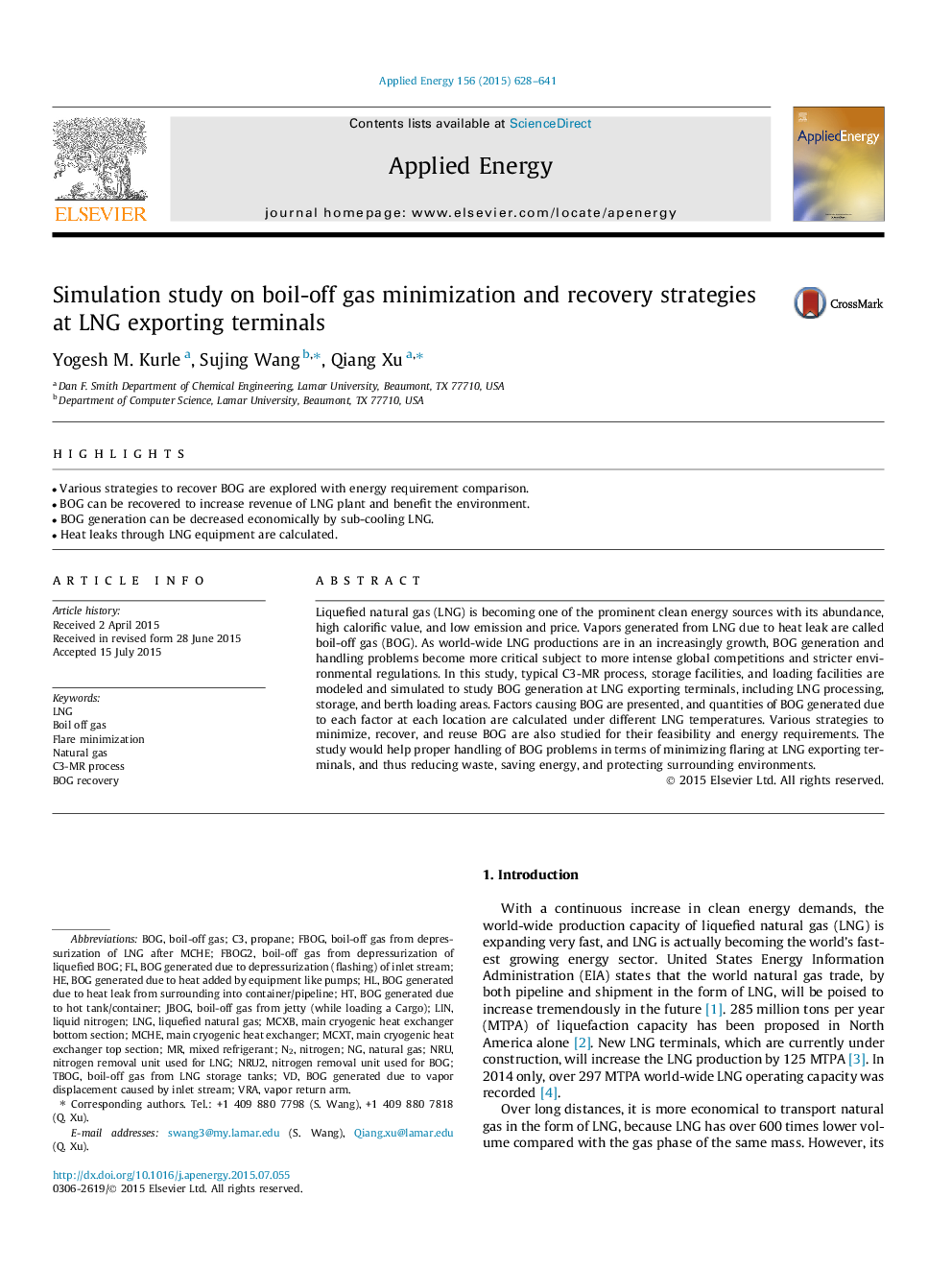| Article ID | Journal | Published Year | Pages | File Type |
|---|---|---|---|---|
| 6686329 | Applied Energy | 2015 | 14 Pages |
Abstract
Liquefied natural gas (LNG) is becoming one of the prominent clean energy sources with its abundance, high calorific value, and low emission and price. Vapors generated from LNG due to heat leak are called boil-off gas (BOG). As world-wide LNG productions are in an increasingly growth, BOG generation and handling problems become more critical subject to more intense global competitions and stricter environmental regulations. In this study, typical C3-MR process, storage facilities, and loading facilities are modeled and simulated to study BOG generation at LNG exporting terminals, including LNG processing, storage, and berth loading areas. Factors causing BOG are presented, and quantities of BOG generated due to each factor at each location are calculated under different LNG temperatures. Various strategies to minimize, recover, and reuse BOG are also studied for their feasibility and energy requirements. The study would help proper handling of BOG problems in terms of minimizing flaring at LNG exporting terminals, and thus reducing waste, saving energy, and protecting surrounding environments.
Related Topics
Physical Sciences and Engineering
Energy
Energy Engineering and Power Technology
Authors
Yogesh M. Kurle, Sujing Wang, Qiang Xu,
